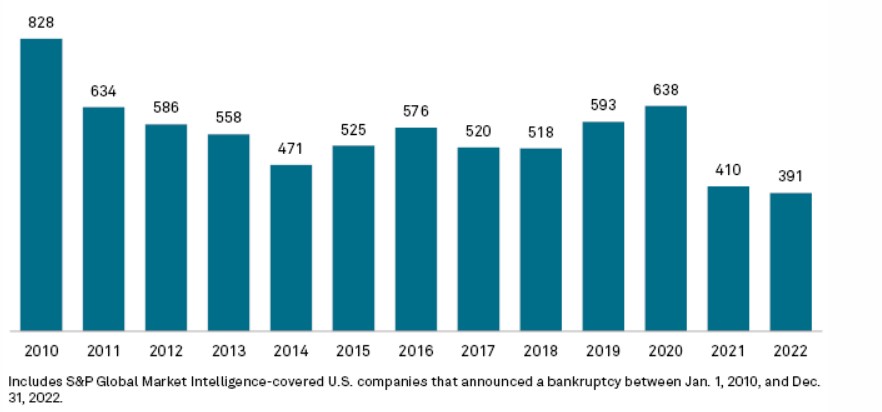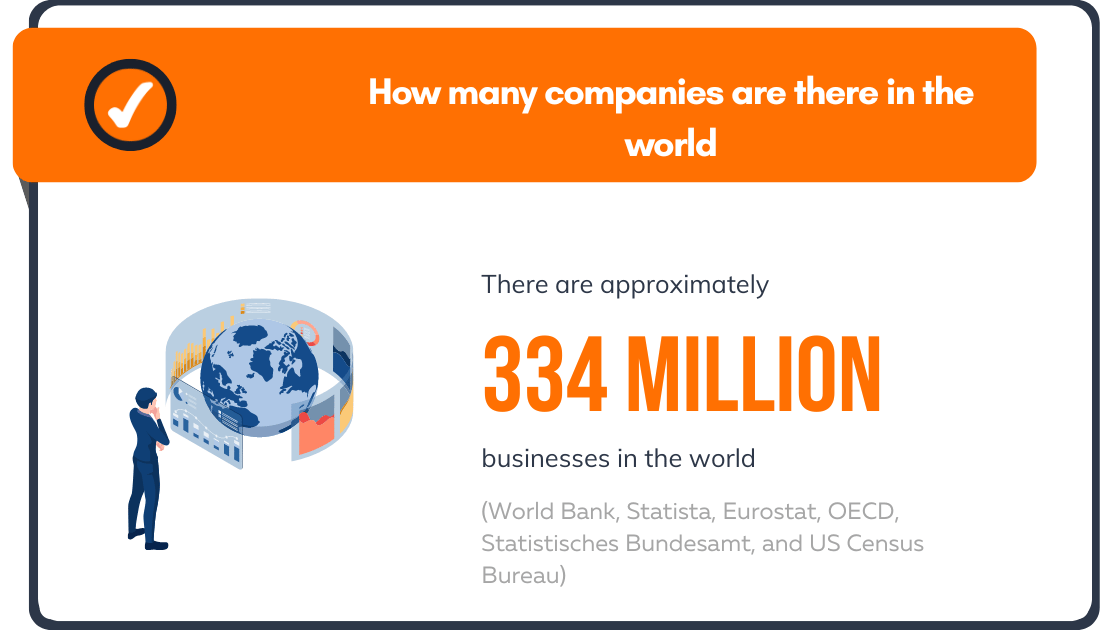90+ Small Business Statistics For 2024: The Ultimate Numbers & Data
The U.S. is packed with 33.2 million small businesses, driving the economy. Even though 80% don’t have employees, they still employ 61.7 million people.
But it’s tough out there—19.6% fail in the first year. Resilience is crucial.
Let’s dive into a detailed list of small business statistics to see what’s really going on.
Must Know Small Business Statistics: Key Numbers
- In the United States, there are 33.2 million small businesses and there are currently around 334 million businesses in the world.
- Over 200,000 businesses have closed their doors permanently due to COVID-19.
- Over 80% of small businesses have no employees, and 61.7 million people are employed by small businesses.
- Approximately 19.6% of small businesses fail within the first year.
- Only 34.5% of businesses survive 10 years.
- $26 trillion in economic developments contributed, when businesses decide to adopt green practices.
- 93.79% of small businesses use social media which approximately 30.57 million businesses in the USA.
Small Business Formation Statistics
Here is some of most small business formation numbers that are important to consider.
- An average of 4.4 million new businesses started every year.
- On average 425,729 new businesses open every month in the United States in 2023.
- Between January and June of 2023, nearly 2.7 million business startup applications were filed, up 5% from 2022 and 52% from 2019.
Small Business Failure By Year Statistics
Small business failure rates show a concerning trend as time goes on. Each year, a higher percentage of businesses don’t make it:
- 1 Year: 21.9%
- 2 Years: 31.8%
- 3 Years: 39.7%
- 4 Years: 45.7%
- 5 Years: 50.0%
- 6 Years: 53.6%
- 7 Years: 57.7%
- 8 Years: 61.0%
- 9 Years: 63.2%
- 10 Years: 65.7%
Sources: (BLS)
Home Based Business Statistics
Home-based businesses are a huge part of the small business world, showing amazing resilience and success over time. Here are some key stats that highlight their prevalence, growth, and financial impact:
- 51.6% of all US small businesses are home based businesses.
- According to the SBA and reported by NYSED, only 20% of home-based businesses fail.
- With 33.2 million small businesses, approximately 15 million of which are home-based.
- 69 percent of startups are home-based businesses.
- Every 12 seconds, a new home-based business starts.
- 59% of home-based businesses are still run from home 3 years later.
- 60.1% of home-based businesses are non-employers.
- Home-based businesses generate $427 billion in revenue each year.
- 44% of home-based businesses are launched with less than $5,000.
- 70% of home-based businesses succeed in three years, compared to 30% of traditional businesses.
Sources: (SBA, SBA Advocacy, UH.edu, Web Archive, SBE council, IEDC Reports, Census, Insureon, NYSED)
Family Business Statistics
Family businesses play a huge role in our economy, shaping job markets and industries. Here’s a breakdown of some interesting stats about family-owned companies:
- 70% of family-owned businesses fail.
- According to familybusinesscenter.com, the average life span is 24 years.
- 33.6% of the S&P 500 companies are family-run, with the founding family owning an average of 18% of the company’s equity.
- In the US, there are 5.5 million family-owned businesses.
- An estimated 60% of US workers are employed by family-run companies.
- 40% of family-owned businesses survive to the second generation, 13% survive to the third, and only 3% survive to the fourth or beyond
Small Business Revenue Statistics
Check out these key insights into how small businesses are performing financially, in terms of revenue, profitability, and growth:
- According to an estimate, 98% of small businesses make no profit in their first years, and 10% of them fail.
- The top 90% of small business owners earn $94,000 or more per year, while the bottom 10% earn $27,000 or less per year.
- Small businesses with no employees average about $46,978 in annual revenue.
- The average sole proprietor earns less than $25K in revenue per year, with net income of around $7K.
- The average small business makes $100,000 in revenue per employee.
- In 2022, over 65% of small businesses operating were profitable.
- 71% of small businesses run by women are profitable.
- Only one in 20 small businesses makes over $1 million in revenue.
- In fiscal year 2022, the SBA loaned over 47,000 small businesses $25.7 billion in 7(a) loans.
- The median income for self-employed incorporated business owners was $55,858.
Sources: ( Census.gov, Forbes, Quickbooks Intuit, SBA.gov, NFIB)
Small Business Revenue Range
| Firm With | Average Annual Revenue |
|---|---|
| 0 employee | $46978 |
| 1-4 employee | $387,000 |
| 5-9 employee | $1,080,000 |
| 10-19 employee | $2,164,000 |
| 20-99 employee | $7,124,000 |
| 100-499 employee | $40,775,000 |
Average profit for small business
| Firm With | Average Profit Anually |
|---|---|
| 0 employee | $4,458.41 |
| 1-4 employee | $36,733.03 |
| 5-9 employee | $102,510.77 |
| 10-19 employee | $205,401.22 |
| 20-99 employee | $676,191.44 |
| 100-499 employee | $3,870,256.29 |
Small Business Debt Statistics
Small business debt plays a huge role in how businesses run and grow. Here’s a closer look at how debt affects small businesses:
- The average small business debt is around $195,000
- 70% of small businesses have outstanding debt.
- Fed’s financial stability study show small business debt at $17.7 trillion in 2022.
- Experian found that the average US small business owner owes $195,000 in debt.
- 32% of business owners applied for a loan in order to refinance or pay down debt in 2020, compared to 30% in 2019.
- 79 % of employer firms have debt, up from 71 % in 2019.
- The amount of debt firms hold also increased; the share of firms with more than $100,000 in debt rose from 31% in 2019 to 44% in 2020.
- 50% of firms took out debt to address their financial challenges.
- 36% firms did apply for loan because of the amount of debt they currently have.
Sources: (Experian, FedsSmallBusiness.org, Fed’s Financial Stability Report, FedSmallBusiness Reports)
Small Business Bankruptcies Statistics
Small business bankruptcies highlight important economic trends. Check out these key stats from the past few years:
- In the year 2022, 13,125 business bankruptcies are reported.
- 16,140 business bankruptcies were reported in the fiscal year 2021.
- 391 corporations filed for bankruptcy in 2022.

Small Business Lawsuit Statistics
Small businesses often deal with legal issues, and lawsuits can be both frequent and expensive. Here, we look at how often it happens, how much it can cost, and recent trends:
- Every year, small businesses are sued to a range of 36% to 53% according to SBA.
- 43% of small businesses have been threatened with a lawsuit.
- Each case could cost up to $150,000, especially if it goes to trial.
- At some point in their lifespan, 90% of all businesses face lawsuits.
- Since 2013, there has been a 320% rise in ADA lawsuits.
Sources: (Zenefits, FullBright)
How Many Businesses are there in the World?
There are approximately 334 million businesses in the world according to a study by World Bank, Statista, Eurostat, OECD, Statistisches Bundesamt, and US Census Bureau. This number is constantly changing as businesses come and go, but it provides a general snapshot of the current business landscape.

The vast majority of businesses (approximately 95%) are small businesses, with fewer than 10 employees. However, there are also a significant number of large businesses (with more than 1,000 employees), which account for a significant portion of total revenue and employment.
Businesses Use Social Media by Platform
| Platform | Number of Businesses Use |
| 200 million globally | |
| 118 million | |
| about 200 million | |
| 50 million businesses | |
| Snapchat | 35 million businesses |
| 57.2 million businesses |